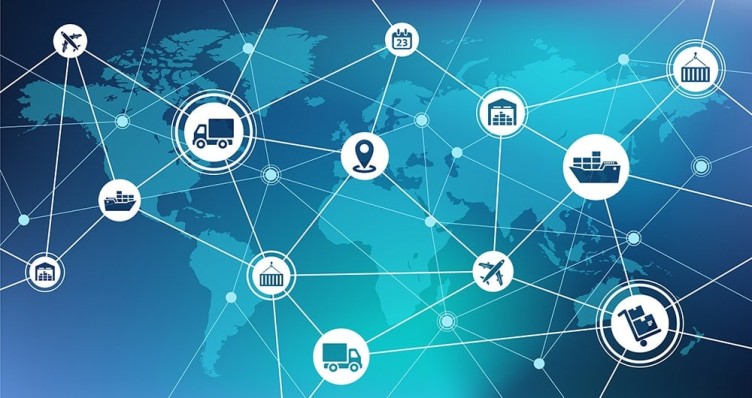Traditional retailers have been on a warpath with e-commerce for years. Offline stores are disappearing from cities because it no longer pays to maintain brick-and-mortar premises. But change is coming. The offline and online realms just signed a pact to join forces.
It all seems very simple at first glance. Digital technology has seduced commerce by cutting out the unnecessary middlemen. It no longer makes financial sense to rent space and keep staff on the payroll. It is much cheaper to go online, where no bills have to be paid for space rental, to secure new business and support customers. The customers are also used to shopping in the comfort of their own homes, which they see as the sensible norm. This model offers both the seller and the buyer maximum efficiency, cost-effectiveness, and satisfaction. It is not the last time that technology has changed people’s behaviors in the real world, causing the value of that world to go down. However, as some suggest, something seems to be missing in this perfect picture.
Will robots take over customer service?
Allow me to briefly move to services. A friend of mine has recently returned from a tour of several Asian countries. Asked about the best experience she could remember, she gave me a surprising answer. She admitted that what impressed her the most was her stay at an unmanned hotel. To be precise, the hotel was actually staffed, but all the staff members, or at least those that the guests could see, were robots. Getting a glass of juice or a fresh towel was never a problem. A tray-toting robot would show up on her hotel doorstep surprisingly fast. My friend felt this was unreal, like visiting another planet. Could all services look like this someday? And what about trade? Could an alternative to online stores be the kind where robots handle all goods? It may seem that today’s e-commerce-dominated retail establishments bear a resemblance to places operated by such mechanical, hotel creatures and that impersonal internet has “conquered” it all and is now dictating the terms. Even if a living courier brings you the product you have ordered online, you cannot deny that your shopping experience is virtual. I asked my friend whether such robotic attendants could be the future of the hotel industry. “What I look for in a hotel is indeed peace and quiet, comfort and anonymity, but also the warm touch of human service,” she replied.
Surprising choices by giants
Even today, unmanned hotels, apartments accessed with codes sent by text message, restaurants that dispense food from vending machines, and stores without living sales personnel can all be found around the world. Automation is becoming ubiquitous. Against this background, it is interesting to watch the choices made by some of the companies that have risen on the back of the Internet revolution and by some traditional brands dating back to before the age of the digital “disruption”. China’s internet giant Alibaba in 2015 has set out to create a chain of conventional offline stores under the name of Hema. In Europe, the popular clothing brand Zara has been testing stores that display products on hangers where they can be touched and tried on but … not bought. If a customer chooses to spend money after visiting such a place, they are expected to make their purchase online. A similar path is followed by independent clothing labels that have built their popularity in social media and are now opening their first brick-and-mortar stores. The trend has spread throughout the world. In the electronics segment, Samsung is opting for showrooms. Apple has long been honing its image in physical Apple Stores. All such places are manned by real people. When talking to customers, they use tablets to search for information as the customers that approach them are already quite knowledgeable having done their research on the web. Is the new generation of brands one of retailers and service providers who have realized that offline presence fills a gap?
Shopping engages many senses
None of these developments surprise marketers who note that buying has involved all senses for many centuries. The Internet has taught us otherwise. Online buyers do not get to touch the merchandise, feel its texture and see what happens once they hit the power button. Neither will they get a sense of belonging to a certain community. With their behavior and knowledge, conventional store sales people can change and broaden our minds by showing us a different model or product. They can guide us and evoke our emotions. This is particularly true for high-end department stores such as Harrods in London, Galeries Lafayette in Paris and KaDeWe in Berlin. A visit to such an establishment lends one the kind of prestige that is hardly attainable online. The web democratizes product offerings making the image and pedigree of a well-known brand less relevant. Long-standing brands that have built their strength on exclusivity have a lot to lose if they compete on price, if goods become easily accessible and if people get to shop around and compare products. If all this happens, traditional brands may well join the trend of reviving offline spaces and leaving the Internet, where everyone is equal.
Stores of the future
The future of trade could well be in the kinds of places that allow customers to re-experience the pleasures they knew before they took their business online. Such places will no longer be ordinary sales venues. Rather, they will become a store, gallery, café, and meeting place in a single facility, bringing together members of a community sharing common values and desires. The sales people in such places will become brand ambassadors. As advisers, they will make the customers who experience second thoughts about products feel better about them and, in the case of exclusive and expensive items, feel good about having spent their money. Technology will have a strong presence in such establishments. The only way to make a purchase, join a loyalty program, get a discount, or learn more about a new product will be to go online. To finalize a purchase, one will need to visit the right website. But then everything else will play out within the four walls through face-to-face interactions. In choosing to make a purchase, customers will again use their senses and make an emotional connection with the staff.
Seamless customer experience
While technology may no longer dominate the scene in such a setup, it will nevertheless be critical for the idea to work. Technology will still be there to facilitate access to unlimited information about the product. It will also enable the customer to experience a whole new range of sensations. Such as the kind one gets when products are shown in virtual reality. If the model takes root, it will pose an interesting challenge for people responsible for capturing new business and marketing. The businesses that succeed in bringing together the online and offline worlds are sure to gain the upper hand. Customer experience in such places will have to be designed to support a seamless transition between two spaces. As customers approach the showroom, they will start receiving text messages informing them about the special deals on offer within. The staff will be armed with electronics to make their answers to customer questions sound more credible.
If asked about the new human experience in coming decades, I would describe it as a unique relationship between digital and physical realities. Neither sphere will dominate. They will be fully blended and reconciled. Life will become a hybrid of values, sensations and impressions arising at the interface between digital machines and humans. I think that these mechanisms best illustrate the future of trade.
Works cited:
INDIGO DIGITAL, Tricia McKinnon, The Future of Retail: 9 Ways Alibaba is Redefining Retail Stores, A Hema supermarket in China, Link, 2022.
FUTURE STORIES, WBR Insights, Zara’s Augmented Reality App Brings Virtual Models to Life in Stores, Link, 2023.
BARKMAN KLEIN CENTER, part OF the Open Society Institute, the John S. and James L. Knight Foundation, and the Philip L. Graham Fund, Digital Media Law Project, Founded in 2007 as the „Citizen Media Law Project,” the Digital Media Law Project (DMLP) works to ensure that individuals and organizations involved in online journalism and digital media have access to the legal resources, education, tools, and representation that they need to thrive, Link, 2022.
Related articles:
– Algorithms born of our prejudices
– Will algorithms commit war crimes?










TomK
I wonder how long this will last 🙂